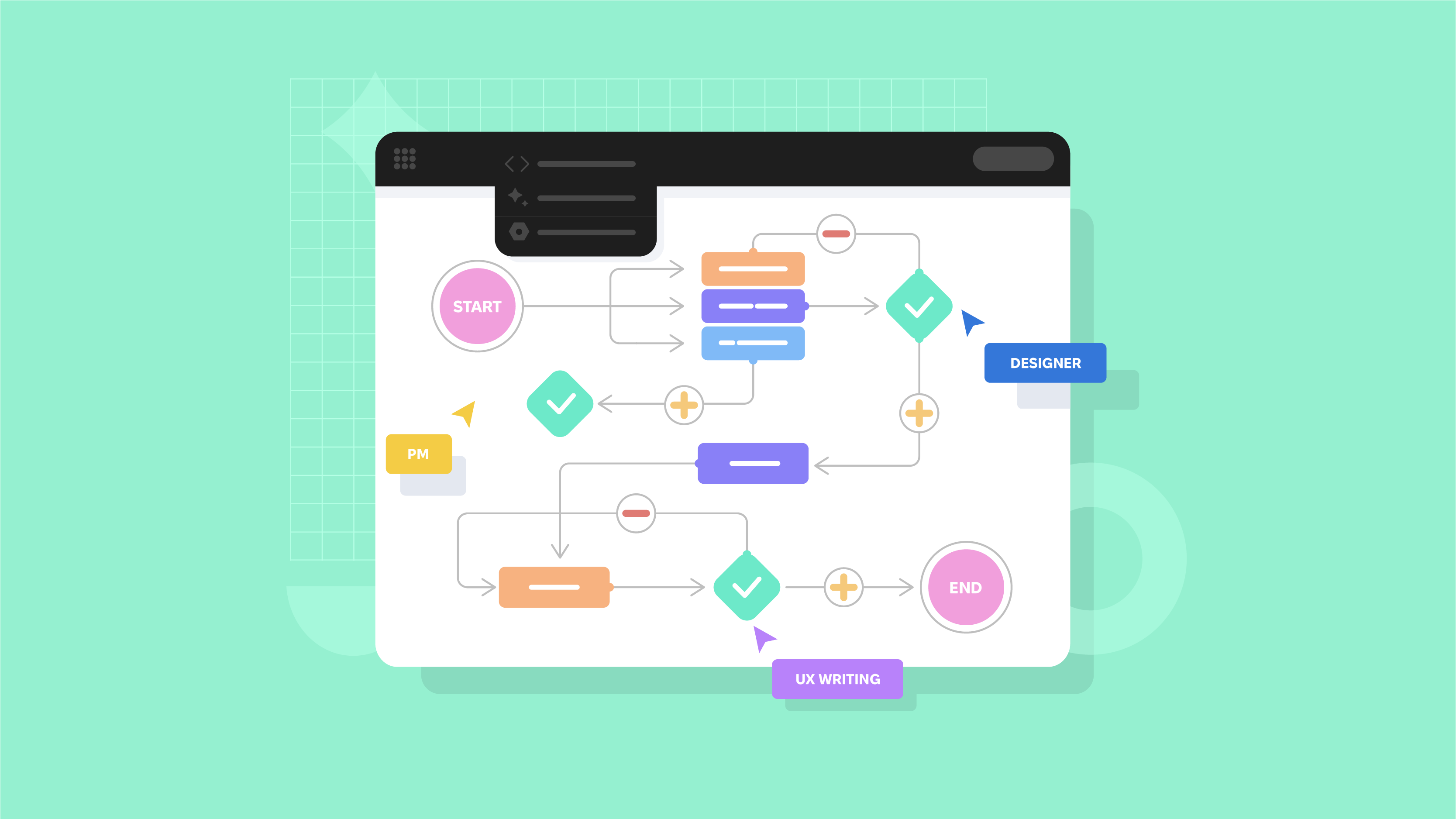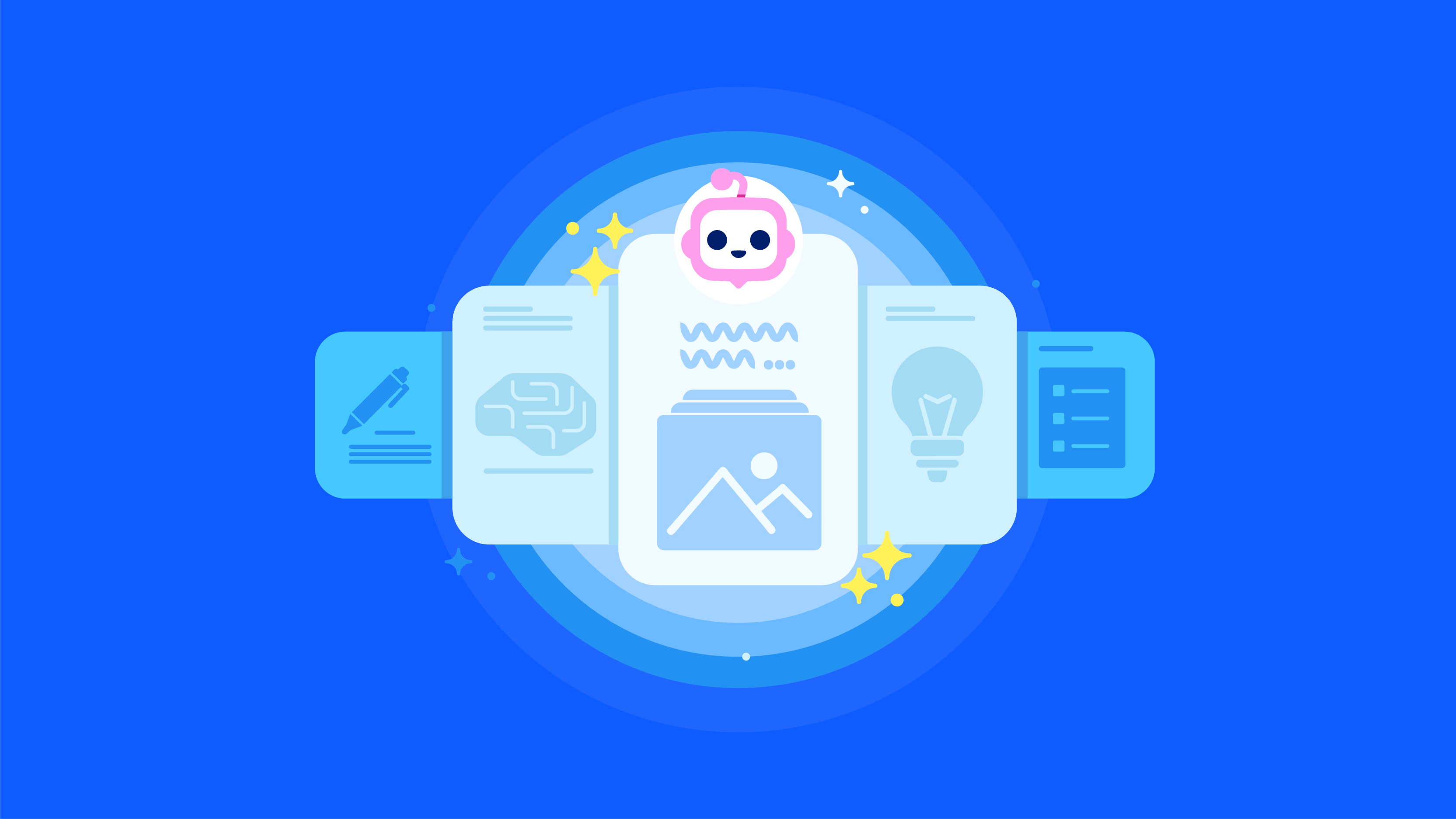Data analytics has revolutionized the way we make decisions in business. By analyzing vast amounts of data, businesses can gain insights that would have been impossible to obtain. With the proper techniques and tools, businesses can leverage data to make better decisions, improve efficiency, and gain a competitive advantage.
Cadabra Studio is a leading mobile and web development company specializing in helping businesses make better decisions through data. Their suite of tools and techniques enables businesses to gain insights into their operations, customers, and markets, which can be used to make informed decisions and drive growth.
In this article, we will explore some of the key techniques and tools used in data analytics for improved decision-making and how Cadabra can help businesses harness the power of data to achieve their goals.
If you are looking for the best company in the USA & Canada, you are in the right place.
Read this article till the end, it will help you to understand your question.
Better yet, sign up for a free consultation with our software development experts.
How is data analytics used in web and mobile development?
Data analytics plays a significant role in web and mobile development by providing valuable insights and guiding decision-making throughout the development process. Here are several ways data analytics is used in web and mobile development:
User Behavior Analysis
Data analytics helps developers understand how users interact with websites and mobile applications. By tracking user behavior, such as clicks, navigation patterns, and session duration, developers can gain insights into user preferences, identify pain points, and optimize the user experience. This data informs design decisions, feature enhancements, and usability improvements.
A/B Testing
Data analytics facilitates A/B testing, which involves comparing two webpage or mobile app versions to determine which performs better. Developers can identify the most effective design, content, or functionality by analyzing user engagement metrics, conversion rates, and other key performance indicators (KPIs). A/B testing helps optimize user interfaces and maximize user engagement.
Performance Monitoring
Data analytics helps monitor the performance of web and mobile applications. Developers can identify performance bottlenecks and optimize application speed and reliability by tracking metrics like page load times, response times, and error rates. This data is crucial for ensuring a seamless user experience and reducing user frustration caused by slow or malfunctioning applications.
Error Monitoring and Debugging
Data analytics assists in identifying and resolving application errors and bugs. By analyzing error logs, crash reports, and exception tracking, developers can pinpoint issues, understand their root causes, and implement necessary fixes. This data-driven approach saves time and effort in identifying and resolving software issues.
Conversion and Funnel Analysis
In e-commerce and mobile app development, data analytics is used to track conversion rates and analyze user funnels. By monitoring user behavior from initial engagement to conversion or desired action, developers can optimize sales funnels, identify conversion barriers, and improve overall conversion rates. This data guides decision-making in optimizing user flows, calls to action, and checkout processes.
Personalization and Recommendations
Data analytics enables personalized user experiences by analyzing user data such as browsing history, preferences, and demographic information. Developers can leverage this data to provide personalized recommendations, content, and targeted marketing campaigns. Personalization enhances user engagement and satisfaction, leading to increased user retention and conversion rates.
Performance Analytics
Data analytics helps track and measure the performance of web and mobile applications over time. By analyzing user engagement metrics, retention rates, and revenue metrics, developers can evaluate the success of their applications and make data-driven decisions to optimize performance and business outcomes.
Techniques for Data Analytics
Data analytics involves analyzing data to identify patterns, trends, and insights. There are several techniques used in data analytics to achieve this.
Descriptive Analytics
Descriptive analytics summarizes historical data to understand past events and trends better. It involves techniques such as data aggregation, data visualization, and basic statistical analysis. Descriptive analytics gives businesses a clear picture of what has happened in the past and helps identify patterns and relationships within the data.
Predictive Analytics
Predictive analytics leverages historical data to make predictions and forecasts about future events or trends. It uses regression analysis, time series analysis, and machine learning algorithms. Predictive analytics enables businesses to anticipate customer behavior, market trends, demand patterns, and potential risks, allowing them to optimize operations and make proactive decisions.
Prescriptive Analytics
Prescriptive analytics goes further by predicting future outcomes and providing recommendations on the best course of action. It combines techniques from predictive analytics and optimization algorithms to identify the optimal decision or solution. Prescriptive analytics helps businesses optimize resources, improve efficiency, and achieve desired outcomes by providing actionable insights and recommendations.

Diagnostic Analytics
Diagnostic analytics aims to determine the causes behind past events and understand why certain outcomes occurred. It involves data exploration, correlation analysis, and root cause analysis. Diagnostic analytics helps businesses identify factors contributing to specific outcomes or problems, enabling them to make informed decisions and take corrective actions.
Text Analytics
Text analytics involves extracting valuable information and insights from unstructured textual data such as customer reviews, social media posts, emails, and documents. It employs natural language processing (NLP), sentiment analysis, and topic modeling techniques. Text analytics enables businesses to understand customer sentiment, extract key themes, detect emerging trends, and improve customer experience.
Data analytics is crucial for businesses in different industries due to the following reasons:
- Improved Decision-Making: Data analytics provides businesses with accurate and relevant information, enabling informed decision-making. It helps identify market trends, customer preferences, and potential risks, allowing businesses to make strategic choices that align with their goals and optimize their operations.
- Enhanced Customer Insights: Businesses can gain a deeper understanding of their target audience by analyzing customer data. Data analytics enables the segmentation of customers based on demographics, behavior, and preferences. This information helps tailor products, services, and marketing campaigns to specific customer segments, improving customer satisfaction and loyalty.
- Cost Optimization and Efficiency: Data analytics helps identify areas of inefficiency and waste within business processes. Businesses can streamline workflows, optimize resource allocation, and identify cost-saving opportunities by analyzing operational data. This leads to improved operational efficiency and reduced expenses.
- Risk Management: Data analytics allows businesses to identify and mitigate potential risks by analyzing historical data and detecting patterns that may indicate future problems. By understanding risk factors and implementing proactive measures, businesses can minimize financial losses, improve compliance, and enhance overall risk management strategies.
- Competitive Advantage: Data analytics can provide a competitive edge to businesses by uncovering insights and trends that their competitors may overlook. By leveraging data effectively, businesses can identify new market opportunities, optimize pricing strategies, and develop innovative products and services to stay ahead of the market.
In conclusion, data analytics techniques empower businesses to transform raw data into meaningful insights, enabling them to make data-driven decisions, improve operational efficiency, enhance customer experiences, mitigate risks, and gain a competitive advantage in their respective industries.
Tools for Data Analytics
To effectively analyze data, businesses need the right tools. Here are some of the key tools used in data analytics:
- Business Intelligence (BI) Tools to analyze data and generate reports and dashboards. These tools allow businesses to visualize their data and gain insights into their operations.
- Data Mining Tools to identify patterns and trends in data. These tools use machine learning algorithms to analyze data and identify insights.
- Statistical Analysis Tools to perform statistical analysis on data. These tools are used to identify patterns and trends in data and make informed decisions.
Data Visualization Tools to visualize data and make it easier to understand. These tools allow businesses to create charts, graphs, and other visualizations to help them analyze data.

What’s the difference between data analytics and data science?
The term “data science” and the term ” data analysis ” are interchangeable. But it’s two separate fields that indicate a distinct career path. The difference in impact is also significant for businesses. A significant difference between the data scientist and the data analyst is the way the data is collected and the results that they are achieving. A data analyst is seeking answers to specific problems that business owners currently identify. In order to accomplish this, it is necessary for researchers to study large datasets.
- Focus and Objectives:
- Data Analytics: Data analytics focuses on examining past and current data to derive insights and make informed decisions. It involves exploring and analyzing data to uncover patterns, trends, and correlations. The primary objective of data analytics is to answer specific business questions, optimize processes, and improve decision-making.
- Data Science: Data science encompasses a broader scope and aims to extract knowledge and insights from data using various scientific methodologies, statistical techniques, and computational tools. It involves not only analyzing data but also developing models, algorithms, and predictive systems to uncover patterns, predict future outcomes, and solve complex problems. The objective of data science is to generate actionable insights, develop predictive models, and create data-driven solutions.
- Skills and Expertise:
- Data Analytics: Data analytics typically requires a strong foundation in statistics, data visualization, and proficiency in tools and techniques such as SQL, Excel, and business intelligence platforms. Data analysts are skilled in data cleansing, data aggregation, descriptive statistics, and data visualization to extract meaningful insights from structured data.
- Data Science: Data science demands a broader skill set that includes advanced statistical analysis, machine learning, programming, and data manipulation skills. Data scientists are proficient in programming languages like Python or R, and they employ complex algorithms, predictive modeling techniques, and data mining methods to extract insights from diverse and often unstructured data sources.
- Scope and Complexity:
- Data Analytics: Data analytics typically deals with structured and relatively clean data. It focuses on analyzing historical data, summarizing it, and identifying trends and patterns. While data analytics may involve some level of data preprocessing, the complexity is usually lower than data science.
- Data Science: Data science covers a wider range of data types, including unstructured and semi-structured data such as text, images, and sensor data. It involves handling large volumes of data, performing complex data preprocessing, feature engineering, and advanced modeling techniques. Data science tackles more complex problems, such as developing machine learning models, predictive analytics, and AI algorithms.
- Problem-Solving:
- Data Analytics: Data analytics addresses specific business problems and aims to provide actionable insights that support decision-making. It focuses on solving immediate and well-defined challenges, such as improving marketing campaigns, optimizing operational processes, or identifying customer segments.
Data Science: Data science tackles broader and often open-ended problems. It involves formulating hypotheses, designing experiments, developing models, and implementing solutions. Data scientists often work on exploratory projects, predictive modeling, recommendation systems, and solving complex business or scientific challenges.

How data analytics can improve user experience?
There were lots of examples when data analytics played a crucial role in improving user experience.
- A popular streaming platform, Netflix heavily relies on data analytics to enhance user experience and personalize content recommendations. By analyzing user viewing behavior, preferences, and engagement patterns, Netflix can recommend relevant movies and TV shows to individual users, leading to a more personalized and enjoyable viewing experience. Their data-driven approach has contributed to increased user retention and customer satisfaction.
By the way, we have mentioned the Netflix case in our previous article. - Airbnb, an online marketplace for lodging and travel experiences, uses data analytics to improve its user experience in multiple ways. By analyzing user reviews, search queries, and booking patterns, Airbnb can identify trends and preferences, leading to better search results and more accurate travel recommendations. They leverage data to optimize pricing algorithms, enhance host-guest matching, and provide tailored suggestions, resulting in an improved user experience and higher customer engagement.
- Spotify, a music streaming platform, employs data analytics to enhance user experience through personalized music recommendations. By analyzing user listening history, playlists, and engagement data, Spotify creates customized playlists, suggests new songs and artists, and generates Discover Weekly playlists tailored to individual user preferences. This data-driven approach enhances music discovery, increases user engagement, and improves overall user satisfaction.
- The e-commerce giant Amazon relies heavily on data analytics to provide a seamless and personalized shopping experience. By analyzing customer browsing history, purchase behavior, and product interactions, Amazon offers personalized product recommendations, customized search results, and targeted marketing campaigns. This data-driven approach enhances user engagement, simplifies shopping, and increases customer satisfaction.
- Google Maps leverages data analytics to optimize its navigation experience. By analyzing real-time traffic data, historical travel patterns, and user feedback, Google Maps can provide accurate and efficient routing suggestions to users. This data-driven approach enables users to make informed decisions about their routes, avoid traffic congestion, and reach their destinations faster, resulting in an improved navigation experience.
These case studies highlight how data analytics can significantly impact user experience across various industries. By leveraging data to understand user behavior, preferences, and patterns, companies can tailor their services, provide personalized recommendations, optimize processes, and ultimately create a more enjoyable and user-centric experience for their customers.
How Cadabra Studio can help
Cadabra provides businesses with the tools and expertise they need to harness the power of data. Here are some of the ways our team can help businesses improve decision-making.
Data Analysis
Our team of data analysts can analyze businesses’ data to identify patterns and insights. By analyzing data, businesses can make informed decisions on how to proceed.
Predictive Modeling
Cadabra can use machine learning algorithms to build predictive models to forecast future trends and events. By using predictive modeling, businesses can make informed decisions on allocating resources and planning for the future.
Custom Dashboards
We can create custom dashboards that allow businesses to visualize their data and gain insights into their operations. These dashboards can be tailored to meet businesses’ specific needs and provide real-time insights into their operations.
Data Visualization
Also, Cadabra team can create custom visualizations that make it easier for businesses to understand their data. Using data visualization, businesses can identify patterns and insights that may not be visible through traditional analysis.
Conclusion
Data analytics is an essential tool for improved decision-making in business. By analyzing data, businesses can gain insights into their operations, customers, and markets, which can be used to make informed decisions and drive growth. Cadabra Studio provides businesses with the tools and expertise they need to harness the power of data.
Through data analysis, predictive modeling, custom dashboards, and data visualization, we can help businesses make better decisions and achieve their goals. With the right tools and techniques, businesses can leverage data to gain a competitive advantage and stay ahead of the curve in today’s rapidly evolving business landscape.
Don’t hesitate to contact us to learn more about how our tools and expertise can help your business succeed!











